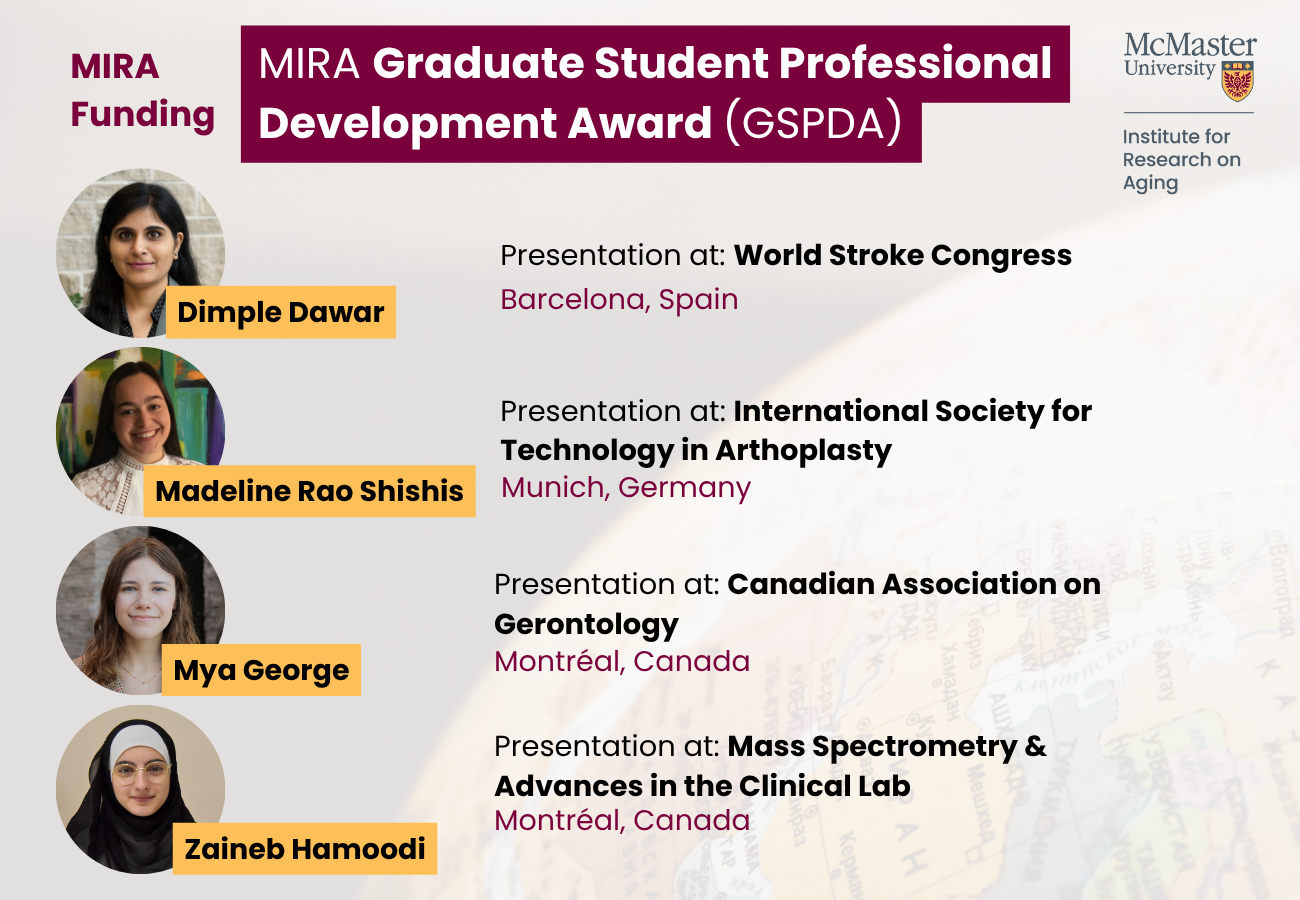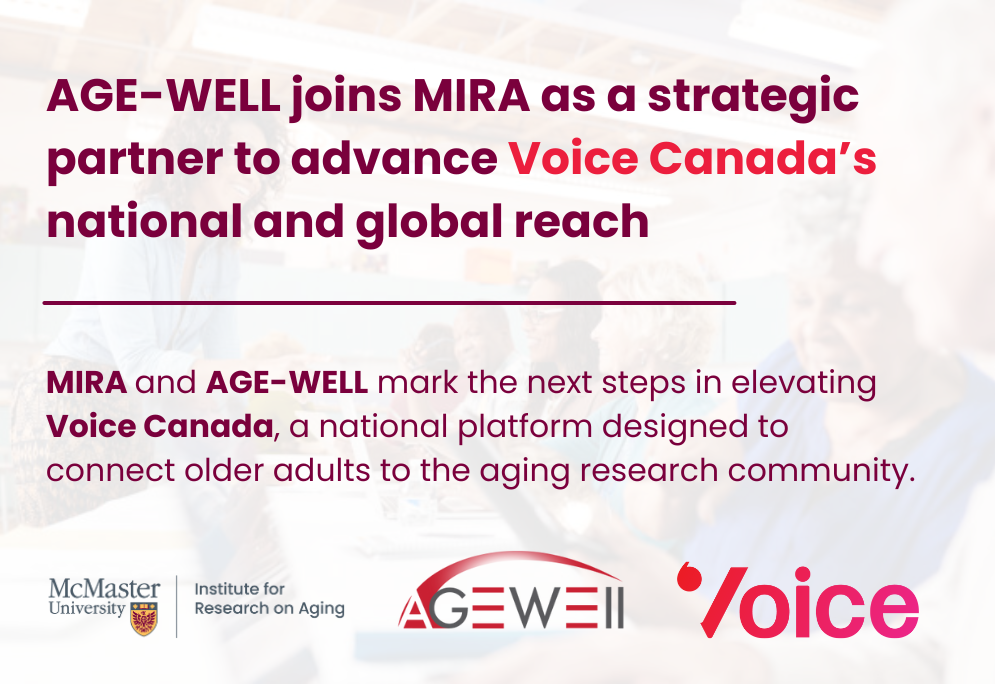The Michael G. DeGroote Institute for Infectious Disease Research has put the spotlight on the outstanding achievements of MIRA Member Dr. Dawn Bowdish, Canada Research Chair in Aging & Immunity (Tier 2) and Assistant Professor, Department of Pathology and Molecular Medicine at McMaster.
Dr. Bowdish talked to IIDR about her research efforts in developing a better understanding of how the immune system fights S. pneumoniae in the elderly; the importance of showing self-confidence as an aspiring scientist (even if you don’t always feel confident); the value of promoting diversity and various leadership styles in an academic realm and much, much more.
What does your research focus on?
I have a very collaborative lab team that studies the immune system’s most collaborative cell, the macrophage. We study how macrophages shape and are shaped by the microbial communities that live on and in us and how this influences susceptibility to pneumonia.
We use studies of ancient and modern evolution to study the origin of macrophage phagocytosis, the process by which a cell engulfs material either to destroy it, to feed on it, or to get information from it. We collaborate with physicists, chemists and engineers to understand how phagocytosis works. We also study how macrophages and their close cousins, monocytes, develop in youth and what goes wrong in age because we believe this may be the key to keeping older adults healthier for longer.
We work with our clinician friends and collaborators to develop novel immunomodulatory strategies to prevent infections in the old, the hospitalized and the frail.
What are the real world applications of your research?
Although I think our work on discovering novel immunomodulatory drugs and new strategies to prevent infections in older adults has great potential to move to real world application, I’m also very proud of our basic research, which we do just for the pleasure of discovery. To have those brief moments of insight into the inner workings of our favourite cell is incredibly gratifying. I’m a big believer that the greatest discoveries come from fundamental research.
What is the most rewarding part about being an IIDR member?
I love the collaborative atmosphere and “can do” attitude of the IIDR. I remember when I was interviewing for my post-doc I asked my future supervisor some questions about access to equipment and resources and he said “My dear girl, if you can dream it, we can do it here.” I got the exact same “if you can dream it, we can do it” feeling when I first came to the IIDR and I haven’t been disappointed yet!
What is your proudest accomplishment at the IIDR?
Gerry [Dr. Gerry Wright, director, IIDR] introduced me to Dr. Jennie Johnstone, a former IIDR clinician scientist who studied pneumonia in elderly people during my first year here. She and I hit it off and I decided that if I wanted to study bacterial pneumonia, I should study a population that is most vulnerable – older adults.
I invested my start-up in an aging mouse colony and when it became apparent the microbiota was an important component, I started aging germ-free mice. I was told I was crazy (or specifically that I had “more money than sense”) to set up something that would take years to develop but I felt strongly that I had to do the right experiments to answer my hard questions, not the easy ones.
Fortunately, it was the right decision and we’ve published papers that explain why some treatments for pneumonia failed. Experiments were promising in pre-clinical young mouse models and phase one trials with young adults, but failed in a real world setting in which older adults were the actual recipients.
Now, my mantra is: we have to develop therapies in the context of the age of the recipient. I’m proud that Gerry and my IIDR colleagues supported me in taking a risk with my start-up.
What is your advice for aspiring female scientists?
Don’t give up before you even try. I’m always amazed and horrified at how many of our bright young trainees decide that they can’t/won’t be successful in their careers for various reasons and start pursuing other avenues.
Although I certainly don’t think that academic careers are the only thing one can or should do with a PhD, we’ll never have the diversity we need in academia if at least some of our best and brightest don’t give it a go.
Why should women and girls have an interest in science and/or pursue a career in science? Why is it important to encourage women and girls?
There are many arguments for better representation of women in science but the one that resonates with me most is the fact that having more diversity within a group leads to better decision-making.
Companies that have boards of directors with more women on them have higher profits and departments with more women tend to be more productive than those who don’t. We also tend to prepare more and present better when we present to a group of people who are more diverse than we do for a group with members who are “just like us.”
I think women are the canaries of the coalmine of diversity. If you can sit around a table and you don’t notice that only 1 person out of 10 is a woman, you probably also don’t notice other groups who are missing from the conversation. Once that light goes on and any group that doesn’t include 50% woman starts looking odd, you start noticing other groups who are missing and wondering what other perspectives you are missing out on.
Because I believe that at the IIDR we are all trying to make an impact, we need to have the most diverse groups and viewpoints available to push us to be the best scientists we can be.
Why is female mentorship important?
I once had a conversation with Dame Nancy Rothwell (Google her-it was amazing!) who participated in a study of management styles of successful leaders in business, education and non-profit groups with very large budgets. The hypothesis of the study was that leadership profiles would differ between for-profit and non-profit agencies. The researchers found that this wasn’t the case but there was a very strong difference in leadership styles of men and women. Since you didn’t get included in the study unless you were already a successful leader, both styles were equally effective but they were definitely different.
I used to think that there was only one way to be successful in science and that was to imitate the successful men around me. Although I think women still have to work within the confines of our current system, at least to some degree, I think that exposing our young people to different types of leadership styles allows them to see that there are many ways of being a successful leader and they can build one that best suits them.
How do you mentor students? Can you tell us a personal mentorship story?
In my lab we talk a lot about how to present with confidence. For example: no disclaimers before you talk (“I’m so sorry, I should have done this better but…”); no self-deprecating comments (“someone with more experience could explain this better”); and no questions (“I must have missed it but, I just wanted to ask…”). We also encourage one another to seek out and self-nominate to give talks and presentations. Basically I subscribe to the “fake it until you make it” philosophy of self-confidence.
Early on I had one female trainee who got the message and within months was a super confident go-getter. It may have taken a bit longer on the inside but at least it showed on the outside! I also had a male trainee who I had to work with A LOT to do the same. I use this as an example of how we are all on a spectrum of behaviours that may be enriched in women or may be enriched in men. My feminism is based on creating constructive changes that can benefit everyone.
The theme for International Women’s Day is “Be Bold for Change” which encourages women to declare what bold action they will take to specifically help drive gender parity. What do you currently do, or what will you do to “Be Bold for Change” in 2017?
When I was a little girl I thought that men drank coffee and women drank tea. When I saw a woman ask for coffee for the first time I thought it was the most transgressive thing I had ever seen.
Kids pick up some strange ideas about gender based on what they see around them so I want to make sure they see women as strong leaders. To do this I try to make sure that I own my authority. I go by “Dr.”, I revel in words like “bossy” (I am the boss after all) and I always go by “scientist” rather than “professor” or “researcher” (which I’m told by single friends really decreases ones desirability on dating websites). I want my kids and those I’m surrounded by to understand that they have female leaders who aren’t afraid of leading.
I’m participating in a study of grade 4 students about what their perception of a scientist is before and after having a science lesson taught by a female scientist (Dr. Sloboda is too!) I also participate in Canadian Association of Girls in Science events. I try to bring up equity and diversity issues whenever I can and encourage my colleagues to take on leadership opportunities whenever I can. Lastly, I think 2017 might be the year that Dr. Lesley MacNeil and I finally write our book on lessons learned as female academics.

